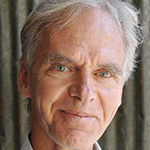Partial to Home: On tour with Dr. Jimmy

[ad_1]

The elevator door opened and two third-year med students, both looking to be in their early 20s, got in. A white male and an African-American female.
The doors closed.
“What are you two specializing in?” Jimmy asked the students.
“I’m going into surgery,” the male answered.
“Internal medicine,” the female said.
“I love that,” Jimmy said after the students had gone.
Those of us on the tour nodded in agreement.
In surveys measuring primary care physicians per capita, Mississippi usually ranks last or next to last.
Keeton, a Columbus native (Lee High, Class of ’57), was dean and vice-chancellor of University of Mississippi Medical Center (UMMC) from 2009 until 2015. That is to say he was over the entire UMMC complex.
Keeton, his predecessor, Dan Jones, and successor LouAnn Woodward, the current dean and vice-chancellor, are credited with transforming this behemoth with its 10,000 employees, 3,000 students and $1.7 billion annual budget from a somewhat dreary, charity and teaching hospital into a sleek, state-of-the-art center for medical education, patient care and research.
A conspicuous component of that transformation occurred five years ago with the dedication of a striking new medical education building. The five-story glass and stone building with its open atrium came with a $74 million price tag, about the same as the new basketball arena at Ole Miss, Keeton noted.
Throughout our tour the names Manning, Barksdale and Sanderson were conspicuously present. All have lent their financial support and personal endorsement to the medical center. Eli Manning’s image appears throughout the Children’s Hospital.
For more than three hours, Keeton, 82, led us on a 2.6-mile-long trek through the labyrinth of buildings in which tomorrow’s M.D.s, nurses, medical educators, dental hygienists, researchers, dentists and health-care professionals are being minted.
Everywhere we went we were greeted warmly with, “Well, hello, Dr. Keeton.”
“We graduate 96 percent,” said Keeton. Of the physicians who do their residencies in-state, 75 percent of them stay in Mississippi, he said. Of those who do their residences out-of-state, 50 percent return to the state.
“A freshman med student came up to me and said, ‘Mr. Keeton, I thought I was smart; everybody in my class is smart.’”
Throughout the tour Keeton spoke about transforming public perceptions of UMMC.
We turned down a long, narrow hallway that looks like it was once the service entry to a boiler room. Overhead the exhaust pipes are painted in rainbow colors. Billboard size murals showing UMMC staff engaged with patients line the hallway.
“People thought we were a charity hospital. We’re an academic medical center. There are 150 of them in the country. We’re the only one in Mississippi.
“And we don’t care how much money you have, we’re going to take care of you.”
In the nursing school we stop to visit with two recruiters.
“Nurses take care of patients, not doctors,” said Keeton. “I give that lecture (to future doctors) at the med school all the time: ‘If you don’t get along with your nurses, you are a fool.’”
Later: “We recruited this guy to do liver transplants from Tylertown, Mississippi. He went to Emory, (Johns) Hopkins and was at St. Louis. We’re now the third best in the nation of outcomes of liver transplants. We’re third in the nation out of about 100 places that do it.”
“It’s amazing, you get one good person in a leadership position, everything changes.”
We stopped in front of a large mural of Dr. James D. Hardy, UMMC’s first chairman of the department of surgery, who performed the first human-to-human lung transplant in 1963 and the next year caused a frenzy when he transplanted the heart of a chimpanzee into a dying human. The heart beat for 90 minutes and the procedure paved the way for human-to-human heart transplants.
The night Hardy performed his first lung transplant was the night Medgar Evers was shot and brought to UMMC. Hardy sent his chief resident to the ER to take care of Evers.
“The alpha and the omega,” someone said.
Throughout our tour we saw engaged people doing important work in modern, often new facilities.
“It’ll make you proud to see something like this in Mississippi,” Keeton had told us.
Certainly that was the case with our group.
“I would love to show all the people of Mississippi (UMMC),” Keeton said. “They have no idea.”
Birney Imes ([email protected]) is the former publisher of The Dispatch.
Birney Imes III is the immediate past publisher of The Dispatch.
[ad_2]
Source link
